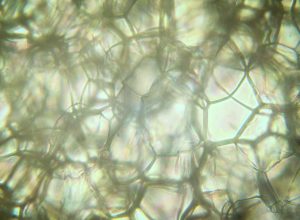Need to keep heat in or out? Polar’s insulation products will help, because they are designed to combat energy loss caused by conduction, convection and radiation.
Convection and conduction move thermal energy through interactions among molecules in fluids (gas or liquid) and solids. In fluids warmer molecules rise as cooler ones fall, this convective mixing distributes heat energy. In solids molecules are stationary but as they gain heat particles within them speed up and collide with slower particles, transferring energy as they do. In general, the higher the density of a material, the greater its potential for heat loss or gain.
Gases, lik e the air around us, make excellent insulators because their low density and relatively few molecules slow thermal transmission. Polar’s insulation take advantage of this by trapping air in millions of pockets (cells) in rigid polystyrene. The cells restrict convection to tiny spaces, greatly slowing the movement of energy and resulting in efficient high R-value insulation.
e the air around us, make excellent insulators because their low density and relatively few molecules slow thermal transmission. Polar’s insulation take advantage of this by trapping air in millions of pockets (cells) in rigid polystyrene. The cells restrict convection to tiny spaces, greatly slowing the movement of energy and resulting in efficient high R-value insulation.
In fact, trapping gas in cells is so effective that some rigid insulation manufacturers substitute low density gas for air to produce even higher R-values. Expensive low density gasses are highly diffusive, so while they are less able to conduct heat, they also tend to dissipate. So, like a helium party balloon that bounces off the ceiling at night only to be bouncing off the floor in the morning, these gasses leak through microscopic holes in the insulation and are replaced by air. When that happens the R-rating falls. So even though you paid for a high rating you do not actually get the return for the investment.
Radiant energy is an electromagnetic wave that can travel through space. It is how the sun’s energy is transferred to earth. Any warm object will emit radiant energy to its cooler surroundings. Radiant energy is in the infrared light spectrum and can be reflected in the same way as visible light.
Cooler in the summer – Knowing about radiant energy explains how the reflective surface on Polar insulation can lower energy costs in the summer; by keeping the warmth outside. For e xample, vinyl siding installed over the reflective side of WeatherAll® will form a vertical air space that averages approximately 3/8” between the insulation and the siding. The space is zero where the vinyl makes contact and 5/8” – 3/4” at the most distant contours. As siding warms (from outside in) it will emit radiant energy horizontally across the space where it is reflected by WeatherAll®’s bright surface, minimizing thermal gain at the insulation. This dynamic produces an R-value of roughly 21. And no, it won’t build up heat behind the siding2.
xample, vinyl siding installed over the reflective side of WeatherAll® will form a vertical air space that averages approximately 3/8” between the insulation and the siding. The space is zero where the vinyl makes contact and 5/8” – 3/4” at the most distant contours. As siding warms (from outside in) it will emit radiant energy horizontally across the space where it is reflected by WeatherAll®’s bright surface, minimizing thermal gain at the insulation. This dynamic produces an R-value of roughly 21. And no, it won’t build up heat behind the siding2.
Warmer in the winter – In cooler months the direction of thermal migration is reversed, from the warmer inside to the cooler exterior. Thermal energy is conducted through the wall warming the WeatherAll® insulation from the inside out. The reflective surface in an inefficient emitter of radiant energy (think Low-E) so the heat is retained in the wall, making the whole house more comfortable.
1 ASHRAE Handbook, 1981 Fundamentals, American Society of Heating, Refrigerating, and Air-Conditioning Engineers, Inc.
2 Technology Report 87-8, June 1987, Effect of Wall Insulation on Siding Temperatures – I, A Kusan Inc. R&D Section